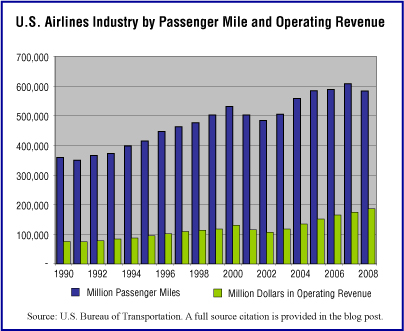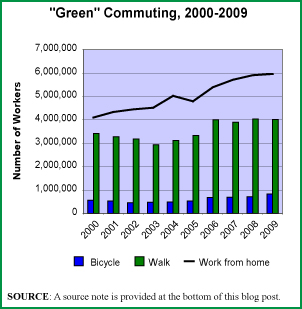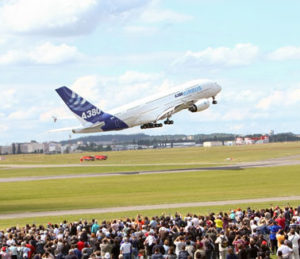
Ride-hailing services are on-demand transportation services that do not include other on-demand services such as food delivery or package delivery. Ride-hailing vehicles can be any type of motor vehicle: private car, motorcycle, auto rickshaw or private taxi, for example. Customers use smartphone apps to book and pay for rides.
Of the 16 billion trips completed by ride-hailing services worldwide in 2017, more than 70% were in Asia. Didi Chuxing, which claimed 90% of the Chinese ride-hailing market, provided the most rides, 7 billion. Grab and Go-Jek, the largest ride-hailing companies in Southeast Asia provided 1 billion and 900,000 rides, respectively. Globally, these two companies ranked 4th and 5th for the number of rides provided.
This week’s market size post shows the total revenues for ride-hailing services in Southeast Asia for 2015, 2017, 2018 and 2025.1 The figure for 2025 is projected. Grab has a presence in 8 countries: Malaysia, Thailand, Singapore, Philippines, Indonesia, Vietnam, Myanmar, and Cambodia. After Grab acquired Uber’s Southeast Asia division in March 2018, Grab claimed 90% of the Southeast Asian ride-hailing market. Go-Jek has had a presence in Indonesia since 2011 and expanded into Thailand, Singapore, and Vietnam in 2018. Its attempts to expand into the Philippines were unsuccessful due to government regulatory requirements. Grab and Go-Jek have been competitors in Indonesia since 2015 when they both launched motorcycle-taxi hailing apps. By 2018, Go-Jek claimed 79.2% of the ride-hailing market; Grab, 20.8%, according to the Business Competition Supervisory Commission.
Throughout Southeast Asia, 35 million people use ride-hailing services, booking an average of 8 million rides per day. But there is an opportunity for growth. While 90% of the more than 350 million internet users in Southeast Asia2 have smartphones, 80% do not use ride-hailing services. However, rather than focusing their attention on expanding their ride-hailing business, Grab and Go-Jek are using the familiarity and trust built from their ride-hailing services to expand into banking, e-commerce, e-wallet, food delivery, and other services. All of these services will be accessible through their smartphone super-apps. As of January 2019, Grab had 125 million downloads; Go-Jek, 108 million.
1 Source for 2015 and 2017: Nicholas Shields, “Grab Could Lock Down Another $1 Billion in Funding,” Business Insider Intelligence, October 8, 2018 available online here; Source for 2018 and 2025: Resty Woro Yuniar, “Can Indonesia’s Go-Jek Loosen Grab’s Grip on Southeast Asia?” South China Morning Post, February 11, 2019 available online here.2 Internet user numbers are for the 6 biggest economies in Southeast Asia: Indonesia, Philippines, Vietnam, Thailand, Malaysia, and Singapore.
Geographic reference: Southeast Asia
Year: 2015, 2017, 2018 and 2025
Market size: $2.5 billion, $5.1 billion, $8 billion, and $31 billion, respectively
Sources: Nicholas Shields, “Grab Could Lock Down Another $1 billion in Funding,” Business Insider Intelligence, October 8, 2018 available online here; Resty Woro Yuniar, “Can Indonesia’s Go-Jek Loosen Grab’s Grip on Southeast Asia?” South China Morning Post, February 11, 2019 available online here; Elaine Huang, “Asia is the World’s Largest Ride-Hailing Market With Over 70% Share – Grab Dominates SEA,” Vulcan Post, September 7, 2018 available online here; Mars Woo, “Grab and Go-Jek’s Dominance is Not Deterring Upstarts, These are Their Ride-Hailing Competitors in Southeast Asia,” KrAsia, January 9, 2019 available online here; Kentaro Iwamoto and Shotaro Tani, “Ride-Hailers Grab and Go-Jek Wage First Full-On War in 2019,” Nikkei Asian Review, January 17, 2019 available online here; “Southeast Asia Mobile Internet Usage Increasing Dramatically,” FinanceX on Medium, December 5, 2018 available online here; Erkka Niemi, “The Most Interesting Players in the Ride-Hailing Market,” Medium, November 13, 2018 available online here; Herry Barus and Aldo Bella Putra, “The Market Share of Gojek is Almost 80 Percent,” 2nd Industry.co.id, September 6, 2018 available online here; Cindy Silviana and Fanny Potkin, “Grab, Go-Jek Wage Street Fight for SE Asia ‘Super-App’ Supremacy,” Reuters, November 29, 2018 available online here.
Original sources: Google and Temasek
Image source: Free-Photos, “car-traffic-man-hurry-1149997,” Pixabay, February 14, 2016 available online here.


 After the Iran Nuclear Deal took effect and some sanctions were lifted, Iran saw a surge in tourism, up three-fold since 2009. In the year ending March 2017, more than 6 million tourists visited the country. Many of the tourists were young, individual travelers from Europe and Asia who were interested in Iran’s history and culture. As a result of this influx of tourists, hotel firms from France, Spain, the United Kingdom, and the United Arab Emirates have opened or plan to open hotels there within the next few years.
After the Iran Nuclear Deal took effect and some sanctions were lifted, Iran saw a surge in tourism, up three-fold since 2009. In the year ending March 2017, more than 6 million tourists visited the country. Many of the tourists were young, individual travelers from Europe and Asia who were interested in Iran’s history and culture. As a result of this influx of tourists, hotel firms from France, Spain, the United Kingdom, and the United Arab Emirates have opened or plan to open hotels there within the next few years. 

